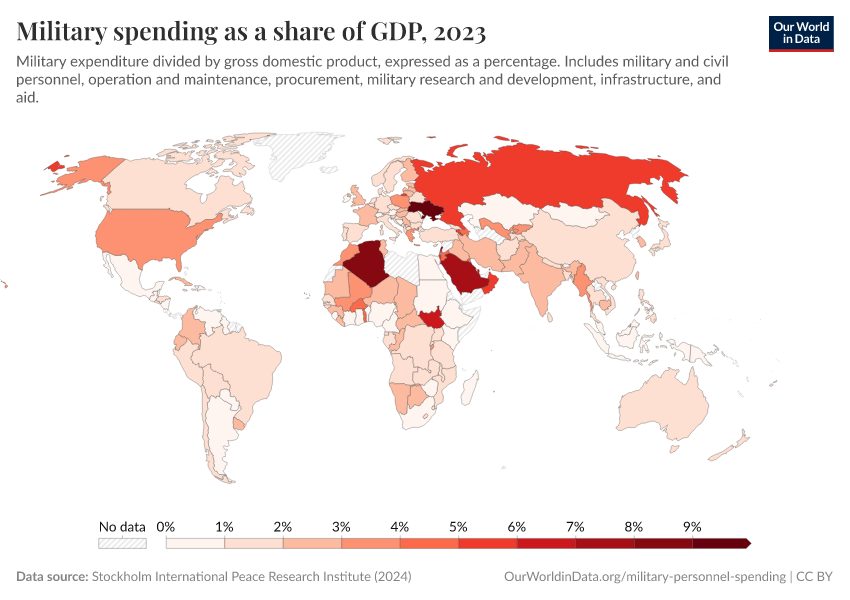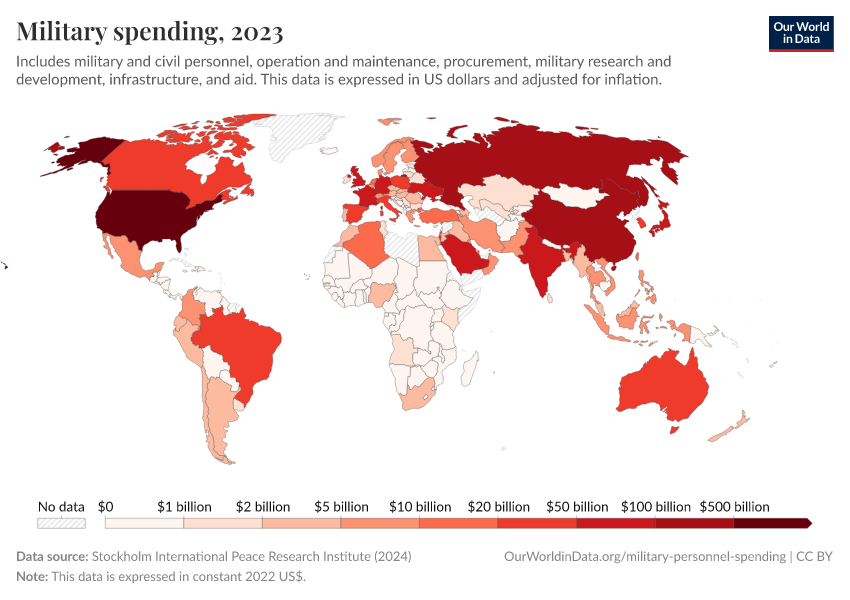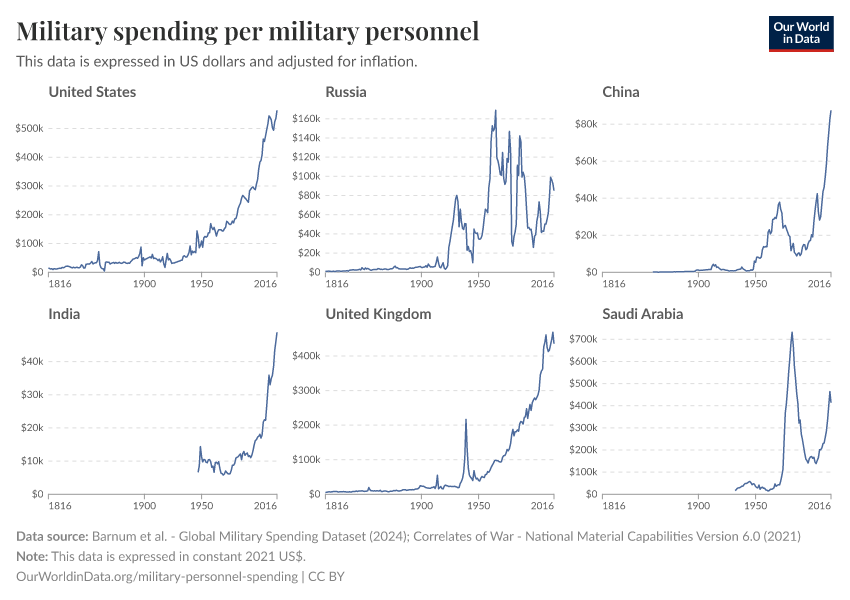Military Personnel and Spending
How large are countries’ militaries? How much do they spend on their armed forces? Explore global data on military personnel and spending.
Militaries — heavily armed and highly organized forces — can be used defensively to protect a country’s people against external and internal threats. They can also be deployed during emergencies, such as natural disasters, to evacuate affected populations and provide them with shelter, food, and medicine.
But militaries can also be used offensively to attack other countries, maintain domestic power, and suppress opposition. Some wield weapons of mass destruction, and even when they are not actively deployed, militaries may divert resources from other public priorities, such as spending on healthcare and education.
On this page, you can find global data and visualizations on military personnel and spending.
Key Charts on Military Personnel & Spending
See all charts on this topicCite this work
Our articles and data visualizations rely on work from many different people and organizations. When citing this topic page, please also cite the underlying data sources. This topic page can be cited as:
Bastian Herre and Pablo Arriagada (2013) - “Military Personnel and Spending” Published online at OurWorldinData.org. Retrieved from: 'https://ourworldindata.org/military-personnel-spending' [Online Resource]BibTeX citation
@article{owid-military-personnel-spending,
author = {Bastian Herre and Pablo Arriagada},
title = {Military Personnel and Spending},
journal = {Our World in Data},
year = {2013},
note = {https://ourworldindata.org/military-personnel-spending}
}Reuse this work freely
All visualizations, data, and code produced by Our World in Data are completely open access under the Creative Commons BY license. You have the permission to use, distribute, and reproduce these in any medium, provided the source and authors are credited.
The data produced by third parties and made available by Our World in Data is subject to the license terms from the original third-party authors. We will always indicate the original source of the data in our documentation, so you should always check the license of any such third-party data before use and redistribution.
All of our charts can be embedded in any site.















